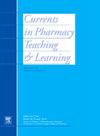衔接学科:通过互动小组活动对跨专业角色和责任的学习进行评估。
IF 1.3
Q3 EDUCATION, SCIENTIFIC DISCIPLINES
引用次数: 0
摘要
世界卫生组织(世卫组织)将跨专业教育(IPE)定义为“两个或两个以上的专业相互了解、相互学习和相互合作”,并认为跨专业教育是“协作实践就绪”劳动力的必要组成部分在这篇文章中,我们描述了一个跨专业的教育活动,其重点是增加学生对医疗保健专业人员的角色和责任的认识。代表六个医疗保健相关学科的教师合作开发了一个互动小组活动。来自运动训练、营养、护理、药学、社会工作和语言病理学专业的学生参加了一个1小时的互动课程,重点是比较和对比每个学科之间的20个共同角色和责任。每个学生在互动环节之前和之后都完成了知识评估。采用配对的岗前设计,我们比较了学生在干预前后对跨专业角色和责任的知识得分。调查结果显示,学生们的知识总体上有所增长。这一干预表明,一个基于专业团体的活动可以是一个有用的工具,以增加学生对各种医疗保健角色和他们的责任的理解。通过提高知识,这些学生可以更好地准备参加一个跨专业的医疗团队,从而提高以病人为中心的护理质量。本文章由计算机程序翻译,如有差异,请以英文原文为准。
Bridging disciplines: An evaluation of learning about Interprofessional roles and responsibilities through an interactive group activity
The World Health Organization (WHO) defines interprofessional education (IPE) as “when two or more professions learn about, from and with each other”, and considers IPE a necessary component of a “collaborative practice-ready” workforce.1 In this article we describe an interprofessional educational activity that focused on increasing students' knowledge of healthcare professionals' roles and responsibilities. Faculty members representing six healthcare related disciplines collaborated to develop an interactive group activity. Students from athletic training, nutrition, nursing, pharmacy, social work and speech-language pathology programs participated in a 1-h interactive session focusing on comparing and contrasting 20 common roles and responsibilities between each discipline. Each student completed a knowledge assessment prior to and after the interactive session. Using a matched pair pre-post design, we compared students' scores on their knowledge of interprofessional roles and responsibilities before and after the intervention. The findings revealed that students displayed an overall increase in knowledge. This intervention demonstrates that an interprofessional group-based activity can be a useful tool to increase students' understanding of various healthcare roles and their responsibilities. By improving knowledge, these students could be better prepared to participate in an interprofessional healthcare team, thereby improving the quality of patient-centered care.
求助全文
通过发布文献求助,成功后即可免费获取论文全文。
去求助
来源期刊

Currents in Pharmacy Teaching and Learning
EDUCATION, SCIENTIFIC DISCIPLINES-
CiteScore
2.10
自引率
16.70%
发文量
192
 求助内容:
求助内容: 应助结果提醒方式:
应助结果提醒方式:


